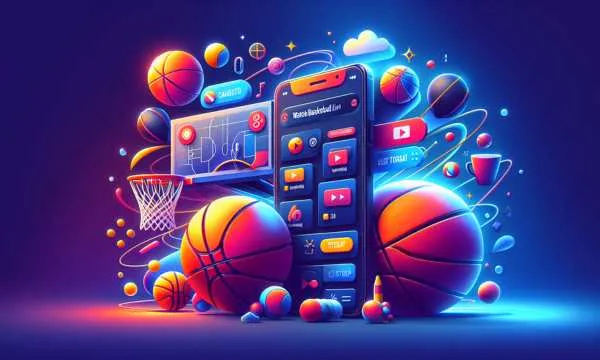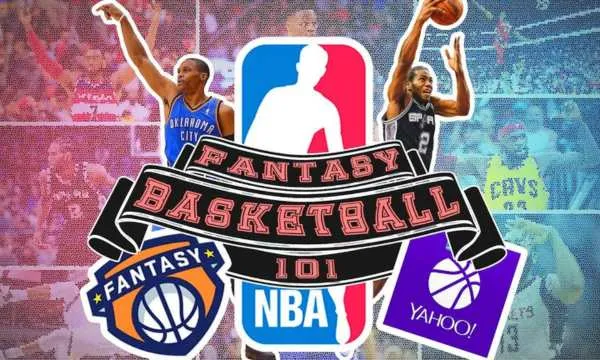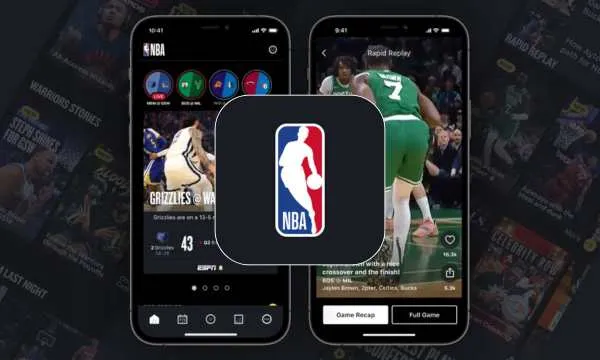NBA Draft: Understand in Detail How It Works
The NBA Draft represents the most important moment of talent renewal in American professional basketball, shaping the future of the league.
Ad
The anticipation surrounding the NBA Draft mobilizes fans, analysts, and franchises months before the event takes place.
Dreams come true when names are called by the commissioner, while carefully crafted strategies by franchises are put into practice.
Today’s article explains the details, rules, and curiosities behind this fascinating process that transforms young talents into stars.
1. What is the NBA Draft? How Important is it for Basketball?
The NBA Draft is the official system used by the league to distribute new talent among the 30 franchises in a balanced way.

NBA Draft Structure (Google Source)
Functioning as a competitive parity mechanism, the draft allows teams with poor records to have priority in selecting promising prospects.
This structure attempts to prevent the perpetual dominance of the same teams, offering chances for rebuilding to struggling franchises.
Held annually after the NBA Finals, usually in June, the event has transformed into a televised spectacle watched worldwide.
The impact of a single successful pick can completely transform the destiny of a franchise for a decade or more.
Examples like LeBron James (Cleveland), Tim Duncan (San Antonio), and Michael Jordan (Chicago) demonstrate how the Draft can change history.
For many teams, making the right choices in the draft represents the only realistic way to build a competitive team capable of competing for titles against giants from larger markets.
2. Eligibility Rules
To participate in the NBA Draft, players must satisfy specific eligibility criteria that have undergone various changes over the decades.
Currently, domestic candidates (Americans) must be at least 19 years old during the calendar year of the draft and be one year removed from high school graduation.
This rule, known as “one-and-done,” frequently directs talents to one college season before declaring for the draft.
International players must be at least 19 years old in the year of the draft but don’t need to attend American colleges.
Their nationality and where they played professionally determine their classification as international prospects in the context of the Draft.
Some opt for professional leagues in Europe, Australia, or the G-League to prepare themselves.
Important details about eligibility:
- Athletes can declare for the NBA Draft twice
- College players who test the process can return to college if they don’t hire an agent (rule recently modified)
- International prospects can put their names in and then withdraw them by the established deadline
- The minimum age of 19 is frequently debated, with discussions about eliminating it or increasing it
Understanding these rules is fundamental for players planning their careers, as poor timing can significantly harm their chances.
3. Deciphering the NBA Selection Process
The NBA The selection is a system designed to determine which teams will receive the first picks, preventing teams from intentionally losing games (tanking).
Only the 14 franchises that didn’t reach the playoffs participate in this process, with chances proportional to their respective performances in the regular season.
The current system draws the first four ratings, with the rest following the inverse order of the standings.
Implemented in 1985 after suspicions that teams were deliberately losing to secure the first pick, the Draft the selection process has evolved significantly.
The current system, revised in 2019, balanced the probabilities among the teams with the three worst records, each having a 14% chance for the first pick.
Historically, the Draft selection has produced memorable surprises, such as Chicago (1.7% chance) getting the first pick in 2008 (Derrick Rose) and Cleveland (1.7%) in 2014 (Andrew Wiggins).
The tension during the event is palpable, as franchise executives know their future could be radically altered in a matter of minutes during the broadcast of the Draft.
4. Understanding the Draft Order: Order Draw, Playoffs, and Trades
The complete order of the NBA Draft combines the results of the selection with the classification of teams that made the playoffs.

NBA Selection Process (Google Source)
The first 14 positions are determined by drawing the order, with teams not drawn among the first four picks being organized in the inverse order of their regular season campaigns.
Positions 15-30 are occupied by teams that advanced to the playoffs, strictly following their final classification.
The Draft has two rounds, with each team normally having the right to one pick per round.
Each pick has a specific value that can be negotiated, resulting in situations where teams possess multiple selections or none in certain rounds.
Protected picks add complexity, allowing specific conditions for future transfers. Factors that influence the final order:
- Tiebreakers: Teams with identical records draw positions before selection Process
- Traded picks: Frequently exchanged in previous agreements
- Protections: Conditions that may retain picks with the original teams
- Penalties: Rule violations can result in loss of picks
Understanding this order is crucial for teams and players, as different positions imply significantly different contract values.
The first pick generally signs a contract close to $50 million for four years, while selections at the end of the first round receive approximately one-third of this value.
5. How the Magical Night of the NBA Draft Happens
The ceremony has evolved from a simple conference call to one of the most-watched events on the American sports calendar.
Currently held at Barclays Center in Brooklyn or other large arenas, the first round is broadcast in prime time by ESPN and other international networks.
The top prospects are invited to be present, seated in the famous “green room” with family members and representatives.
The NBA commissioner traditionally announces the first-round picks, while the deputy commissioner presents the second-round selections.
Each team has five minutes in the first round and two minutes in the second to finalize their decisions.
Although it seems simple, frantic behind-the-scenes activities include last-minute negotiations and intense debates in the meetings rooms.
The emotional atmosphere is intense during the Draft, with cameras capturing reactions of relief, joy, and occasionally disappointment when players wait longer than expected to be selected.
For many, it represents the culmination of years of dedication and sacrifice, instantly transforming their lives and financial conditions.
The event often extends for more than four hours, with fans following every detail.
6. The Process of Evaluating Future Stars (Prospects)
Talent evaluation for the NBA Draft involves a meticulous process that begins years before a player becomes eligible.
Scouts follow prospects from high school competitions and international youth tournaments, building extensive development profiles.
Franchises employ teams of professionals dedicated exclusively to identifying and analyzing future talents.
The NBA represents a crucial pre-draft event where invited players participate in physical tests, technical exercises, and scrimmages observed by all franchises.
Precise measurements of height, wingspan, body fat percentage, and results in physical tests complement what teams observe in competitive games. Individual interviews allow teams to assess personality, intelligence, and cultural fit.
The analytical revolution has transformed the evaluation process for the Draft, with predictive algorithms complementing traditional scouting methods.
7. Understanding the Famous Mock Drafts
Mock Drafts are predictive simulations that attempt to anticipate NBA Draft picks, becoming a fundamental part of the culture around the event.
Produced by experts, journalists, and specialized websites, they combine insider information, team needs, and talent evaluation to project the results.
The proliferation of these speculative exercises demonstrates the immense public interest in the months leading up to the Draft.
Although rarely accurate in their entirety, Mock Drafts provide valuable context about the perceived value of prospects and possible selection ranges.
Early versions frequently change drastically after college season results, performances in important tournaments like March Madness, and information obtained during the pre-draft process.
This evolution makes following Mock Drafts a continuous activity for dedicated fans.
Renowned analysts like Jonathan Givony (ESPN), Sam Vecenie (The Athletic), and Kevin O’Connor (The Ringer) have developed reputations for their detailed Mock Drafts.
These projections significantly influence the public perception of prospects’ value, potentially even affecting players’ decisions about declaring for the NBA Draft in a particular year.
8. How Negotiations Change the Draft Scenario
Draft picks are valuable assets used in complex negotiations that can completely alter the projected scenario.
Teams frequently trade positions to move up or down in the order, depending on their specific objectives and evaluation of available talents.
Some common trading patterns include rebuilding teams accumulating multiple picks in exchange for a higher selection, or contenders sacrificing future picks for talents that can contribute immediately.
These transactions may involve only picks or include established players and rights to swap in future drafts, adding complexity to negotiations.
The night of the NBA Draft frequently witnesses agreements announced between selections, with teams technically choosing for other franchises before trades are officially finalized.
9. The Impact of the NBA Draft on the Future of Franchises
Few decisions more profoundly affect the destiny of an NBA franchise than their draft choices.
A single successful pick can catapult a team to title contention, while a significant error in the first picks can compromise years of rebuilding.
The pressure on executives is massive, particularly for teams selecting at the top of the NBA Draft after difficult seasons.
- Emblematic stories: San Antonio selecting Tim Duncan in 1997, transforming the franchise into a dynasty;
- Cleveland winning the Selection Process in 2003 and selecting Ohio native LeBron James; or Milwaukee choosing Giannis Antetokounmpo (15th pick in 2013).
The rookie salary scale makes successful draft picks particularly valuable in the salary cap context.
Elite players on rookie contracts represent the most cost-efficient assets in the sport, allowing complementary investments in free agents.
Conclusion
For players, the NBA Draft marks the realization of dreams cultivated since childhood and the beginning of professional careers.
For fans, it offers the promise that even franchises in difficult periods can find their way back to relevance through the right choices.
For executives and coaches, it represents perhaps the greatest test of their evaluative skills and long-term vision.
The lasting fascination with the NBA Draft confirms its cultural importance beyond basketball.
Blending elements of statistical analysis, human evaluation, organizational strategy, and inspiring personal narratives.
The draft continues to be one of the most anticipated events on the American sports calendar – a unique process where science, art, and luck converge to shape the future of professional basketball.
 Watch Live Basketball: Best Streaming Apps
Watch Live Basketball: Best Streaming Apps
Remember when catching a game meant rearranging your entire evening around cable schedules? Live basketball streaming changed that forever. Ad Today, you can watch live basketball […]
Keep reading NBA Fantasy: Best Apps to Build and Manage Your Champion Team
NBA Fantasy: Best Apps to Build and Manage Your Champion Team
NBA fantasy turns real games into a strategic, data-driven adventure where you manage a roster, make smart moves, and enjoy friendly competition. Ad In this article, […]
Keep reading NBA App: Watch Live Games & Highlights
NBA App: Watch Live Games & Highlights
The NBA App has evolved into a powerful hub for fans seeking live action, quick highlights, and original stories that bring the league closer than ever. […]
Keep reading